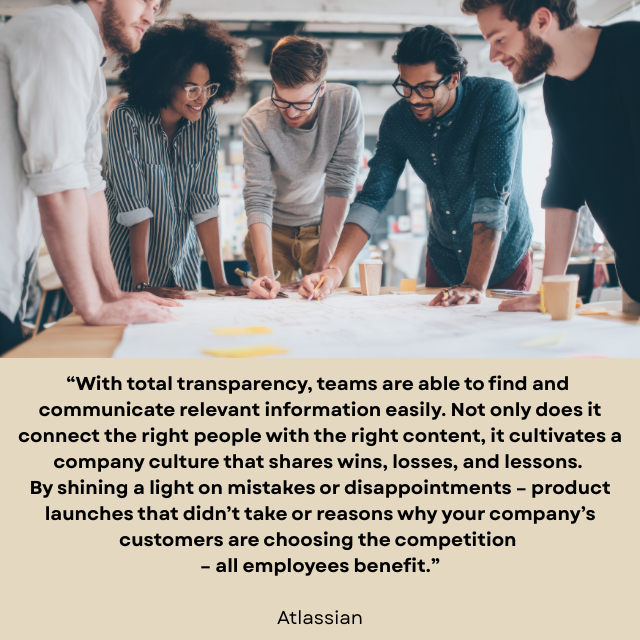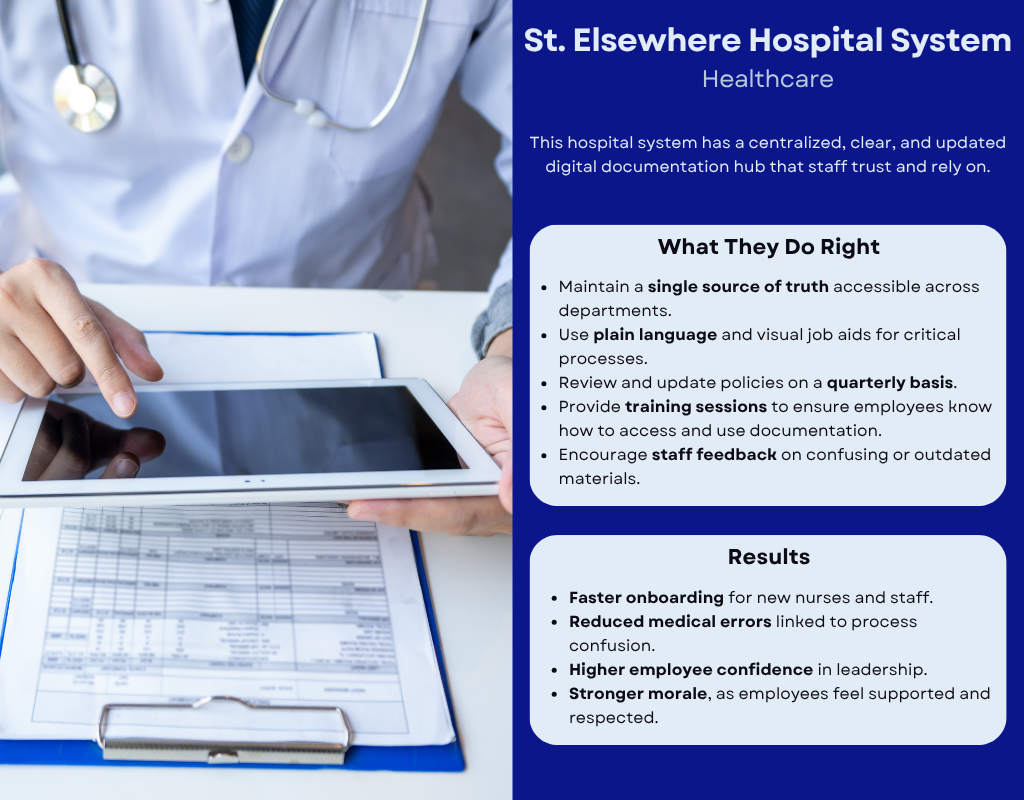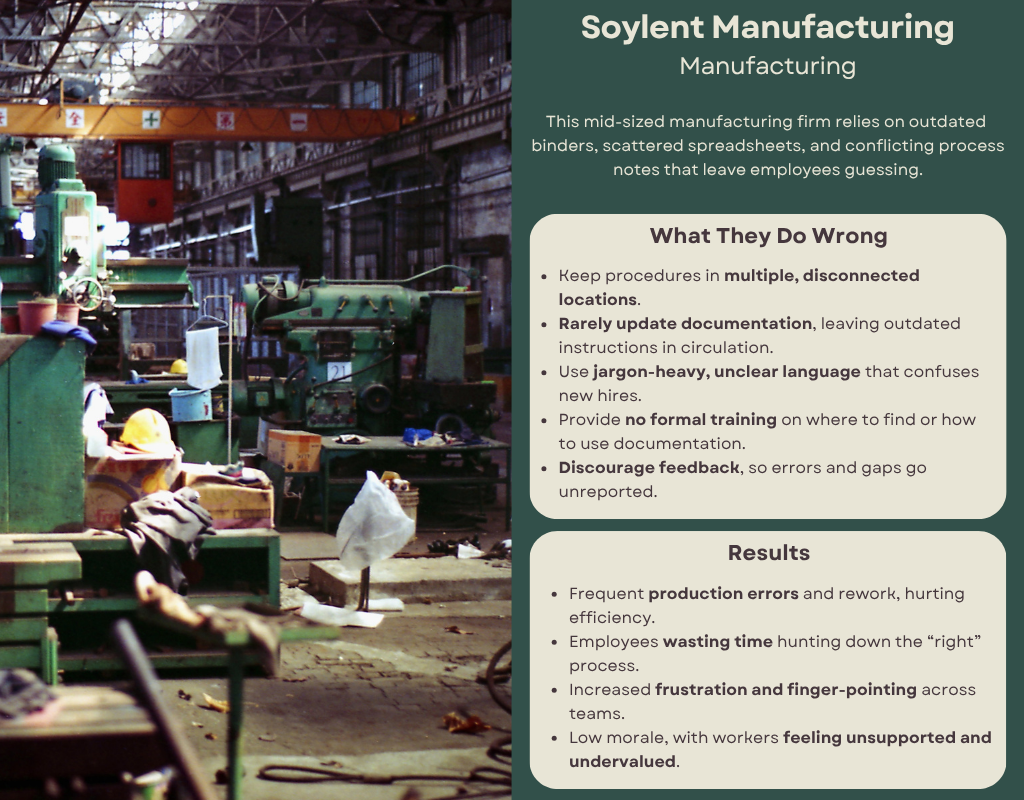- +1 (267) 368-7090
- contact@matcgroup.com
-
53 Knightsbridge Rd,
STE 216
Piscataway, NJ 08854.
Documentation doesn’t usually make the top of a company’s culture list. Perks like free coffee and snacks, flexible schedules, or casual Fridays get the spotlight. But here’s a workplace truth that too many leaders miss: poor documentation quietly sabotages morale.
When employees can’t find the information they need—or worse, find six conflicting versions of it—they feel frustrated, undervalued, and disconnected. And that frustration seeps into the workplace culture faster than you can say “version final_FINAL2.docx.”
Let’s break down why unclear documentation hurts morale, and more importantly, what you can do to fix it.
Think of documentation as the company’s instruction manual. When it’s missing pages, written in jargon, or spread across twelve platforms, employees stop trusting it. That distrust spills over into how people feel about the organization itself.
Clear documentation, on the other hand, says: “We value your time. We want you to succeed. Here’s the information you need, without the scavenger hunt.”
Good communication builds confidence. Confident employees are more engaged. And engaged employees? They’re the ones who stick around, innovate, and share their knowledge freely.

In other words, poor documentation doesn’t just cost time. It costs goodwill.
Here’s how to connect clear communication with a healthier, happier workplace culture:
To see how documentation directly shapes workplace culture, let’s look at two organization, one where strong documentation builds trust and morale, and another where poor documentation does the opposite.


Workplace culture isn’t built on beanbags or pizza parties. It’s built on trust, clarity, and respect. Documentation may not be glamorous, but when it’s done well, it reduces stress, builds confidence, and keeps morale strong.
So, the next time you hear grumbling about “another broken process,” don’t just patch the issue. Check your documentation. It might be the hidden morale-killer in your workplace.
Best Practices for Effective and Engaging Communication in the Workplace
From Learning to Leading: Building a Culture that Drives Success
How Documentation Anchors Distributed Teams (and Keeps Us from Drifting Into Chaos)
“3 ways to use knowledge sharing to boost business and morale.” Atlassian. Accessed 9/9/25. https://www.atlassian.com/work-management/knowledge-sharing